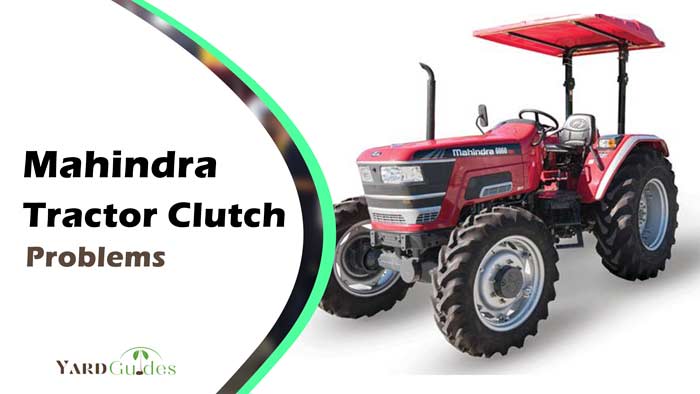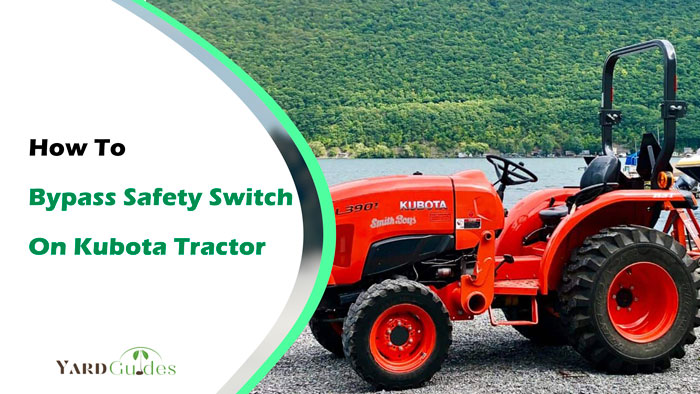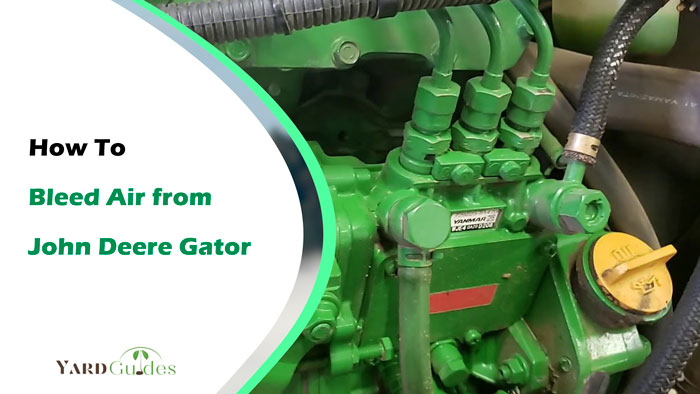Your Mahindra tractors are more than just machines; they are reliable work companions that make a farmer’s job easier. It can be alarming when these dependable machines experience problems with the clutch. Because ignoring this can lead to more significant issues and even costly repairs.
So, what are the Mahindra tractor clutch problems? Some of the most common issues include the following-
- Clutch slippage
- Clutch sticking
- Clutch chatter
- Clutch drag.
In this guide, we will go through the potential issues with detailed information on the Mahindra tractor and how to fix these problems. Some tips on how to prevent them from occurring will also be shared. So keep reading!
Our Guide to Mahindra Tractor Clutch Problems and Possible Fixes
Our extensive research has revealed that Mahindra Tractor Clutches are susceptible to a few issues. Let’s have a quick look at them
| No. | Problems | Fixes |
| 1. | Infrequent clutch engagement | Replace the clutch |
| 2. | Clutch Sticking | Adjust clutch cable |
| 3. | Clutch chatter | Inspect and replace associated components of the clutch |
| 4. | Clutch drag | Repair or replace clutch cylinders, and bearings |
Problem 1: Infrequent Clutch Engagement
When the clutch plate is worn, damaged, or contaminated with oil, it may not be able to create enough friction to transfer power effectively. This can cause the clutch to slip. The symptoms of clutch slippage are given below:
- Burning smell
- Difficulty in shifting gears
- Sudden loss of power
- Sudden loss of speed
- Changing pedal height
Potential Fix:
In this case, replacing the clutch plate is the only solution. To replace the clutch, the following steps can have a go through
- Step 1: Park the tractor on level ground, turn off the engine, and disconnect the battery.
- Step 2: Remove the clutch cover and drive shaft, and access the clutch assembly.
- Step 3: Disconnect the clutch linkage, remove pressure plate bolts, carefully take out the clutch plate and inspect it.
- Step 4: Install the new clutch plate, ensure correct alignment, and place the pressure plate over it.
- Step 5: Secure the clutch with new bolts, and reconnect the clutch linkage.
- Step 6: Reassemble the clutch assembly and drive shaft, and tighten all bolts as per the manufacturer’s specifications.
- Step 7: Start the engine, engage and disengage the clutch, and check for any abnormal behavior or noise.
If you think you can’t do this yourself, it is wise to contact a professional.
Problem 2: Clutch Sticking
A damaged clutch cable can be a possible cause of clutch sticking. Additionally, a worn or damaged clutch plate or an issue with the clutch release bearing can also cause clutch sticking.
The symptoms of clutch sticking are given below:
- The clutch pedal feels spongy or hard to press
- Tractor stalls when coming to a stop
Potential Fix:
When the mentioned problems are noticed, to get rid of these, you have to repair or adjust the clutch cable.
You may go through the steps for clutch adjustment:
- Step 1: Ensure that the tractor is in neutral and the parking brake is engaged.
- Step 2: Locate the clutch cable adjustment that is usually found in the cable end. It is typically situated at one end of the cable, where it connects to either the clutch pedal or the clutch linkage.
- Step 3: Loosen the locknut on the adjustment device with a wrench. Make sure it is not too tight or too loose.
- Step 4: Turn the adjustment device clockwise or counterclockwise, depending on whether you want to tighten or loosen the clutch cable.
- Step 5: Check the free play of the clutch pedal. It should be around 1 inch for most tractors.
- Step 6: Stop and restart the engine to ensure the clutch is functioning correctly.
- Step 7: If necessary, repeat the adjustment process until the clutch pedal free play is within the recommended range.
It is important to note that the exact process may vary depending on the model of the Mahindra tractor. Additionally, it is always a good idea to consult the manufacturer’s manual or an experienced mechanic for further guidance.
Problem 3: Clutch Chatter
If a sudden torque change occurs during clutch slipping, it is a clutch chatter. Clutch chatter can be generated for a variety of reasons. A worn or damaged clutch disc, a faulty pressure plate, or a misaligned or damaged flywheel are examples of these.
These problems might cause the clutch components to shake or chatter against one another, resulting in a distinctive sound.
The symptoms of clutch chatter are given below:
- The vehicle shudders
- The vehicle shakes
Potential Fix:
To get rid of clutch chatter, the following measures might be taken
- Check for flywheel warping and resurface or replace if needed
- Fix oil/grease leaks immediately
- Replace contaminated clutch disc
- Clean all components before installation.
If any components need to be replaced, it is wise to contact a professional.
Problem 4: Clutch Drag
Clutch drag happens when the clutch pedal’s associated disc keeps spinning after the clutch has been disengaged. The symptoms of clutch drag are mentioned below:
- Difficulty shifting gears, particularly into first gear or reverse
- Grinding noise when shifting gears
- Vehicle lurches or stalls when starting from a stop
- The clutch pedal feels stiff or difficult to depress
- The vehicle vibrates or shudders when coming to a stop
Potential Fix:
Initially, you can give some essential checks that are mentioned below:
- Check clutch fluid level and ensure that it is at the appropriate level. If the fluid level is low, top it up with the recommended fluid.
- Bleed the clutch system to remove any air bubbles that can cause clutch dragging. This is done by using a special tool named bleed screw to bleed the system until all air bubbles are removed.
- Adjust the clutch pedal free play
- Inspect the clutch cylinders (master and slave). If required, replace them.
- Inspect the throwout bearing. If it seems to be damaged, replace it. You can watch this video to have the replacement learned:
Changing a clutch cylinder appears to be a simple procedure. To install the clutch cylinder, perform the following steps:
- Step 1: Locate the old cylinder. It is often located on the driver’s side of the automobile.
- Step 2: Remove the old cylinder. Using your wrench or socket set, disconnect the hydraulic line and remove any bolts holding the cylinder in place.
- Step 3: Install the new cylinder in the reverse order of how you removed the old one. Be sure to tighten all bolts and connectors securely. Then, connect the hydraulic line to the new cylinder.
Please be informed that replacing components may require specialized tools and equipment. So, it is always wise to contact a professional in that case.
Final Thoughts
Mahindra tractor’s clutch problems can be various such as clutch slippage, clutch sticking, clutch chatter, and clutch drag. These issues can be caused by a variety of factors, including worn-out clutch discs, low hydraulic pressure, or air in the hydraulic system.
To fix these problems, various measures can be taken. Adjusting the clutch cable, replacing the clutch, or inspecting and replacing associated components of the clutch can be some key measures. Additionally, repairing or replacing clutch cylinders and bearings might also be required.
Finally, it is essential to consult the manufacturer’s manual for further guidance. And if the problem seems too complicated, it is wise to contact a professional. Moreover, Regular maintenance and checking of the clutch can help prevent these issues from occurring.



